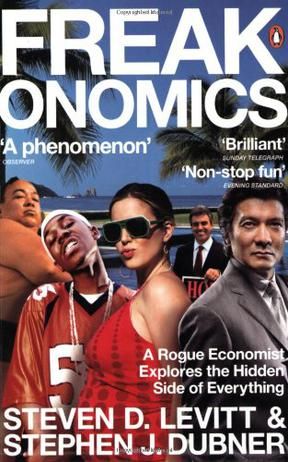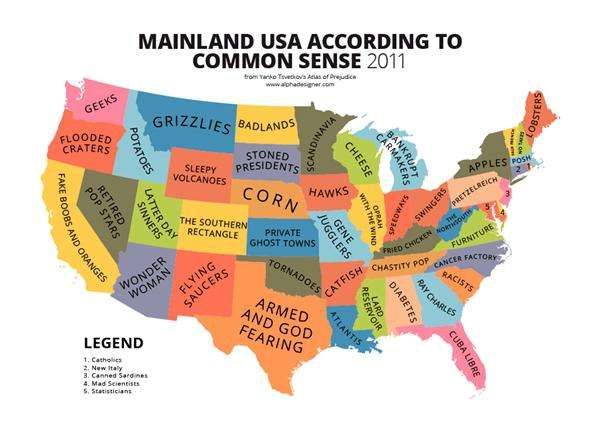It was the 2nd Day that Mr. Yongcheng lead trainees to read the classical bestseller "Thinking, Fast and Slow". He recommended approaches of inspectional reading to us again, when we need to have a quick review for the new book. So I try to apply for making inspectional reading for the "Thinking, Fast and Slow" with the same way he taught us.
Inspection Reading step 1: Look at the title page
1) Title
The main title of book is "Thinking Fast and Slow", no subtitles. There are some other indications of scope that, 'A lifetime's worth of wisdom', and it was said by co-author of Freakonomics, Steven D. Levitt.
Freakonomics was the best selling book in America in 2005.
And Steven David Levitt is a prominent American economist best known for his work on crime, in particular on the link between legalized abortion and crime rates.
The author of "Thinking, Fast and Slow" is Daniel Kahneman, who is a senior scholar at Princeton University. He was awarded the Nobel Prize in Economics in 2002.
2) Shelf type
Comparing with the translated works which was published by China CITIC Press, it is different that the original book classifies it as Psychology book, not the Economic book in simple Chinese edition.
3) Publisher
The following entry about Penguin Books originated from Wikipedia:
Penguin Books is a British publishing house. It was found in 1935 by Sir Allen Lane as a line of publishers the bodley head, only becoming a separate company the following year.
Penguin Books is now an imprint of the worldwide Penguin Random House, an emerging conglomerate which was formed in 2013 by the merger of the two publishers.
4) Edition revision
The book I bought from Tianmao Mall is first published in the United States of America by Farrar, Straus and Giroux 2011. And it was first published in Great Britain by Allen Lane 2011.
5) Number of print
Sorry, I didn't find the number of print from the preface to the table of content. And it has been printed 63 times in simple Chinese edition till to May, 2017. So I deduce this original book was also printed many times.
Inspection Reading step 2: Look at the structure
1) Study the table of content
If you would like to know whether the author has sincerity or not, please see the table of content.
There are 5 chapters and 38 sections in the book. Both chapter titles and section titles look like rationality, without grandstanding.
For Instance:
PART I: TWO SYSTEMS
- The characters of the story
- Attention and Effort
- The Lazy Controller
- The Associative Machine
- Cognitive Ease
- Norms, Surprises, And Causes
- A Machine for Jumping to conclusions
- How Judgments Happen
- Answering an Easier Question
But in simple Chinese Edition, the chapter and section title was translated as "bestseller way", such as:
PART I: System 1, System 2
- An angry face and a multiplication
- Leading role and Supporting role
- The Paradox between Intellectual Inertia and Delay of Gratification
- Fantastic power of association
- You intuition could be a misconception
- Contrary of exception and with in bound of reasons
- Letter "B" and Number "13"
- How do we make the judgement
- Problems about target and inspiration are always together
2) Read the Preface
a. Purpose of writing this book:
So this is my aim for watercooler conversations: improve the ability to identify and understand errors of judgment and choice, in others and eventually in ourselves, by providing a richer and more precise languages to discuss them.
b. Goal
My main aim here is to present a view of how the mind works that draws on recent developments in cognitive and social psychology.
c. Status
Amos and I did not address accurate intuitions beyond the casual statement that judgement heuristics "are quite useful, but sometimes lead to severe and systematic errors."
d. Gap
Unfortunately, professionals' intuitions do not all arise from true expertise.
The spontaneous search for an intuitive solution sometimes fails - neither an expert solution nor a heuristic answer comes to mind.
e. Solution
I consider Daniel Kahneman and Amos Tversky's research about how the mind works that draws on recent developments in cognitive and social psychology as the solution to achieve the goal.
Inspection Reading step 3: Look at the details
1) Keyword
-
Simplifying heuristic
It is a kind of rule of thumb, which you can get easily from your past experience.
Like the picture above, when everyone was commanded by the God that, they should keep walking and carrying the Cross. Most of them follow the order. But after a long distance of trekking, someone felt exhausted. Then he cut the Cross with knife, and kept walking with half of the Cross, which was much lighter than before.
But in the end of road, they found it was cliff, whose distance of gap is just smaller than the length of Cross. So most of them can come across the cliff with their Cross, except the guy who cut his cross.
Walking with lighter weight is a kind of simplifying heuristic, but sometimes it does not work. Predictable biases
Correspond to locality biases in China, there are also some "common sense" in United States.
- assign probabilities to events
When you flip the coin and it already happened that 1000 times head is upward, so what is the next situation? Still upward or half-to-half?
Definitely the probability of head upwards or downwards should be 50%.
- forecasting the future
What is investor's anticipation on AIA's IPO? How about the Federal Reserve's Quantitative Easing 2? Will European Central Bank raise rates? I guarantee that you can catch some inspiration after reading this book.
assessing hypotheses
Raise hypotheses, apply hypotheses, assess hypotheses and adjust hypotheses.estimating frequencies
You can search massive papers about the estimating frequencies via Baidu Search.
2) Key section
The last section which talks about the main content of this book.
Inspection Reading step 4: Make judgment
1) How does the author build logical structure for his book?
Basic elements of two systems --> judgment heuristics --> puzzling limitation of mind --> discipline of economics -->research on distinction between two selves
Start from two systems, and end up with two selves. Do the two selves have some relationship to two systems? What are the differences between Sigmund Freud's id, ego, superego and Daniel Kahneman's two selves?
2) Is the book worth of intensive reading?
Absolutely. No matter you apply knowledge from the book for working or studying, it will take you abundant of benefits.
Inspection Reading step 5: Superficial Reading
I will make the superficial reading accompanying with Mr. Yongcheng's reading together activity. I wish I can get acquainted with much more friends in the activity.









